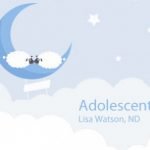Toxicity and Depression
Effects of Depression
Peter Bongiorno, ND, LAc
Depression affects about 120 million people worldwide, and each year about 6% of men and 9.5% of women experience an episode of depression.1 The World Health Organization2 predicts that depression will become the second most burdensome disease by 2020, with the greatest burden in North America and the United Kingdom.
More than 160 million antidepressant prescriptions are written annually, despite the fact that a recent meta-analysis3 shows they are no more effective than placebo to treat mild to moderate depression, the most common condition for which they are prescribed. Other studies reveal that these medications can cause a host of problems, including sexual adverse effects, infertility,4 increased risk of weight gain and diabetes,5 blood pressure problems,6 cardiac deaths,7,8 heart defects in unborn children,9 and even suicide. Antidepressant medications are shown to be effective in severe cases and should be considered as first-line therapy in those patients.
The Naturopathic Advantage
Naturopathic physicians are at a distinct advantage when treating patients with depression. While allopathic medical thought focuses on medications to augment neurotransmitter function, naturopathic care addresses the multitude of factors that contribute to the syndrome we call depression.
The situation reminds me of that old joke about the drunk man at night looking for his keys in a mostly dark parking lot. After circling for hours in the same small but well-lit spot, he runs into another man, who is not inebriated, who asks him: “How do you know your keys are here, when there’s the rest of this lot to check?” The drunken man answers, “Well, my keys could be out there somewhere too, but the light is better here.” In some urgent care situations, neurotransmitter work has its benefits, but most depression represents chronic lower-grade cases that are multifactorial in origin.
As truly holistic practitioners, it is our job to start shining the light in the other areas of depression’s parking lot. We have tremendous opportunity to start looking into additional factors, including sleep problems, diet, nutrient depletion, toxicity, stress, hormonal balance, and many others. This article will survey the available information on the role of toxicity in depression.
Toxicity and Depression
Admittedly, there is scant research on the effect of environmental toxicity in depressive illness. Conventional care does not typically correlate depression with toxicity, except in conditions that are overt and cause unequivocal damage, such as acute lead or mercury exposure. However, mounting research is starting to reveal that lower-level toxic exposures may accumulate over time to cause slower degeneration of brain and nervous system tissue, resulting in more subtle morbidity. Long-term exposure may lead to apoptotic (cell death) events in susceptible brain and nervous system tissue. For instance, an epidemiologic study10 compared 281 young adults who had been exposed environmentally to lead as children with 287 reference nonexposed control subjects. It was found that exposed individuals had significantly more neuropsychiatric symptoms than the referents after 2 decades of initial exposure.
Your Brain on Heavy Metal
The metals most commonly associated with depression are lead,11 mercury,12 and cadmium. These are commonly found in our environment. We can trace the origins of these particular toxins to industrial factories, dental amalgam, welding equipment, cigarette smoke, and old galvanized water pipes. Even natural medicines, such as Ayurvedic13 and Traditional Chinese Medicine14 herbs, have been implicated as sources. These metals tend to generate imbalances between prooxidant and antioxidant balance, which can lead to inflammation and oxidative stress.15 These metals have high affinities for thiol group–containing enzymes and proteins, which are responsible for normal cellular metabolism.
A review of the medical literature reveals that exposure to mercury, whether organic or inorganic, can give rise to the symptoms and traits often found in other neurologically related behaviors, such as autism.16 The sulfhydryl-reactive metals mercury and lead have been shown to affect healthy neurophysiologic function in many ways. Lipophilic metals can allow crossing of the blood-brain barrier and have affinity for the myelin of nervous tissue, cell membranes, and enzymes, whose activities depend on sulfur-containing cysteine moieties.17
The many self-registered symptoms of patients with mercury intolerance have revealed many facets in common with those associated with serotonin dysregulation.18 However, investigations attempting to see whether mercuric chloride in vitro could modulate serotonin activity and to correlate that effect to the psychosomatic symptoms of mercury-intolerant and -tolerant patients have shown no correlation.19
Heavy metals and other toxic chemicals can affect inflammatory levels in the brain. In a cyclic fashion, inflammation makes brain cells more vulnerable to a number of toxins. The brain uses an elaborate system to remove glutamate, a neurotransmitter that can be very toxic to brain cells. It has been shown that mercury, aluminum, and other toxins can easily damage reuptake proteins that the brain uses to remove glutamate, rendering the brain cells more easily damaged.20,21 Furthermore, excess cytokine production in the area can affect the efficacy of these reuptake proteins, allowing smaller amounts of toxin to have a greater effect. Studies from the late 1990s identified the role of toxic metals in vaccination components as a catalyst to the inflammatory sequela of leaky gut.
It has been suggested that the intake of some minerals, such as calcium, magnesium, zinc, selenium, and manganese, can competitively inhibit the absorption and utilization of toxic metals like lead, mercury, and aluminum.22 Therefore, it is possible that dietary deficiency may also increase one’s ability to absorb unwanted metals.
Clinical history and certain specific symptoms may help the practitioner to suspect toxicity. The most common symptoms associated with heavy metal poisoning are the following: tremors, numbness, tingling, headaches, confusion, and fatigue. Certain heavy metals are specifically associated with other comorbidities that may suggest which metal may be having a role. These include the following:
- Lead (parkinsonism, cognitive decline, lower IQ, and learning difficulties in children)
- Mercury (cognitive decline, mood problems, heart conditions, hypertension, infertility, and immune dysfunction)
- Cadmium (osteoporosis, kidney damage, and cancer)
- Arsenic (diabetes)
Diagnosis of Heavy Metal Toxicity
Clinicians can screen patients for heavy metal presence via hair, urine, or blood testing. Hair testing may be a valuable tool for evaluating methylmercury exposure but may not show the burden of elemental mercury in the body. Blood tests for heavy metals have been developed by industry looking for overt acute exposure. As a result, checking blood for heavy metal is useful for current exposure but does not show past exposure or total body burden.23 Similarly, urine tests without provocation will show current toxic exposure, but provocative tests use a heavy metal mobilizing agent, such as oral dimercaptosuccinic acid or intravenous 2,3-dimercapto-1-propanesulfonic acid.
Treatment to Remove Heavy Metals
Treatment for heavy metals can include intravenous chelation and oral chelation. Characteristics of an ideal chelator include the following:
- Greater affinity for the toxic metal
- Low toxicity
- Ability to penetrate the cell membrane
- Rapid elimination of metal
- Higher water solubility
Some vitamins have a known protective role against metal toxicity. Vitamin E (á-tocopherol) is a fat-soluble vitamin that is known to be one of the most potent endogenous antioxidants. á-Tocopherol encompasses a group of potent, lipid-soluble, chain-breaking antioxidants that prevent the propagation of free radical reactions. Vitamin C is a water-soluble antioxidant that occurs in organisms as an ascorbic anion. It also acts as a scavenger of free radicals and has an important role in regeneration of á-tocopherol 159. Supplementation of ascorbic acid and á-tocopherol has been shown to alter the extent of DNA damage by reducing tumor necrosis factor level and inhibiting activation of the caspase cascade in arsenic-intoxicated animals.24 Coadministration of antioxidants (natural or synthetic) or with another chelating agent has been shown to improve the removal of toxic metals from the system and to promote better and faster clinical recoveries in animal models.25
Chelation for Depression?
Few research studies support the use of chelation for depression at this time. Anecdotal reports of patients who have had chelation treatment often note less depression, more alertness, and better memory. As of this writing, there are no known published studies of chelation to treat depression. A 2005 systematic review found that controlled scientific studies did not support chelation therapy for heart disease.26 The National Institutes of Health Trial to Assess Chelation Therapy was begun in 2003 to assess office-based intravenous EDTA treatments for coronary artery disease.27 This trial was stopped in 2008, a year before completion, ostensibly because of technical issues about enrollment. It has been revealed that political pressure from known misanthropes of natural medicine and alternative modalities had a strong role. Given the strong relationship between heart disease and depression, I believe that this trial would have revealed to us further information on how to use chelation therapy to treat depression.
Chemical Toxicities and Depression
Besides the ubiquitous presence of metals in our environment, another concern is chemical assaults that may lead to depression. These often hail from the use of insecticides, herbicides, and thousands of other industrial and household chemicals.
The primary action of the major pesticide classes and solvents is to disrupt neurologic function. In addition to being neurotoxic, these compounds are profoundly toxic to the immune and endocrine systems.28 The production of the methyl group donor S-adenosyl-l-methionine 1,4-butanedisulphonate (SAMe) is important for proper neurotransmitter production. Function of the SAMe pathway can be inhibited by heavy metal sulfhydryl metal exposure and exposures to environmental toxins that can cause oxidative stress. Vitamin B12 is a necessary component of the SAMe pathway and is reliant on glutathione for its own methylation.29 Excess oxidative stressors can deplete glutathione, which can put vitamin B12 production in jeopardy.30 Poor vitamin B12 production can eventually lead to insufficient production of neurotransmitters.
An earlier article in NDNR cites anecdotal evidence from more than 100 patients with depression in a private naturopathic practice who had received glutathione and advocates the use of intravenous glutathione as a supporter of the methyl donor S-adenosylmethionine pathway by helping to create the intermediate complex glutathionylcobalamin to keep vitamin B12 methylated.31 The author noted that this treatment had beneficial temporary results, which suggests that glutathione may not actually aid the removal of toxins but instead may reduce inflammation and help to push the folate-methionine cycle for a limited time. Supplemental SAMe is known to work well for depression, with a rapid onset of action,32 and may be effective for depression in patients who have exposure to these neurotoxic compounds.
Naturopathic Conclusion
As NDs, we are charged with looking for the underlying cause of depression. In a patient-specific manner, depression is a catchall term that represents imbalances in numerous factors, including sleep, hormones, digestive, dietary, psychological, spiritual, exercise, and nutrient status. When these are synergistically addressed and adjusted in an individual way for each patient, depression can successfully remit. If a patient does not seem to be responding, it may be appropriate to consider environmental toxicity issues. Detoxification work and chelation may help to reduce toxic burden, lower inflammation, and allow optimal function of the central nervous system to achieve best mood.
 Peter Bongiorno, ND, LAc was a predoctoral fellow in clinical neuroendocrinology at the National Institute of Mental Health, Bethesda, Maryland, before attending Bastyr University, Seattle, Washington, for his naturopathic and acupuncture degrees. He has a thriving practice in New York City and Long Island, New York. He recently authored the textbook Healing Depression: Integrated Naturopathic and Conventional Treatments (www.InnerSourceHealth.com/depression). His new book will be released in the fall of 2012, is written for the general public, and is titled How Come They’re Happy and I’m Not?
Peter Bongiorno, ND, LAc was a predoctoral fellow in clinical neuroendocrinology at the National Institute of Mental Health, Bethesda, Maryland, before attending Bastyr University, Seattle, Washington, for his naturopathic and acupuncture degrees. He has a thriving practice in New York City and Long Island, New York. He recently authored the textbook Healing Depression: Integrated Naturopathic and Conventional Treatments (www.InnerSourceHealth.com/depression). His new book will be released in the fall of 2012, is written for the general public, and is titled How Come They’re Happy and I’m Not?
References
1. World Health Organization. Mental and Neurological Disorders. Geneva, Switzerland: World Health Organization; 2001. Fact sheet 265.
2. World Health Organization. Mental Health: New Understanding, New Hope. Geneva, Switzerland: World Health Organization; 2001. World health report.
3. Fournier JC, DeRubeis RJ, Hollon SD, et al. Antidepressant drug effects and depression severity: a patient-level meta-analysis. JAMA. 2010;303(1):47-53.
4. Tanrikut C, Feldman AS, Altemus M, Paduch DA, Schlegel PN. Adverse effect of paroxetine on sperm. Fertil Steril. 2010;94(3):1021-1026.
5. Andersohn F, Schade R, Suissa S, Garbe E. Long-term use of antidepressants for depressive disorders and the risk of diabetes mellitus. Am J Psychiatry. 2009;166(5):591-598.
6. Licht CM, de Geus EJ, Seldenrijk A, et al. Depression is associated with decreased blood pressure, but antidepressant use increases the risk for hypertension. Hypertension. 2009;53(4):631-638.
7. Whang W, Kubzansky LD, Kawachi I, et al. Depression and risk of sudden cardiac death and coronary heart disease in women: results from the Nurses’ Health Study. J Am Coll Cardiol. 2009;53:950-958.
8. Hamer M, David Batty G, Seldenrijk A, Kivimaki M. Antidepressant medication use and future risk of cardiovascular disease: the Scottish Health Survey. Eur Heart J. 2011;32(4):437-442.
9. Pedersen LH, Henriksen TB, Vestergaard M, Olsen J, Bech BH. Selective serotonin reuptake inhibitors in pregnancy and congenital malformations: population based cohort study. BMJ. 2009;339:b3569. http://www.ncbi.nlm.nih.gov/pmc/articles/PMC2749925/?tool=pubmed. Accessed January 19, 2012.
10. Stokes L, Letz R, Gerr F, et al. Neurotoxicity in young adults 20 years after childhood exposure to lead: the Bunker Hill experience. Occup Environ Med. 1998;55:507-516.
11. Shih RA, Glass TA, Bandeen-Roche K, et al. Environmental lead exposure and cognitive function in community-dwelling older adults. Neurology. 2006;67:1556-1562.
12. Siblerud RI. The relationship between mercury from dental amalgam and mental health. Am J Psychother. 1989;43:575-587.
13. Saper RB, Kales SN, Paquin J, et al. Heavy metal content of Ayurvedic herbal medicine products. JAMA. 2004;292(23):2868-2873.
14. Ko RJ. Adulterants in Asian patent medicines [letter]. N Engl J Med. 1998;339(12):847.
15. Flora SJ, Mittal M, Mehta A. Heavy metal induced oxidative stress and its possible reversal by chelation therapy. Indian J Med Res. 2008;128:501-523.
16. Bernard S, Enayati A, Redwood L, Roger H, Binstock T. Autism: a novel form of mercury poisoning. Med Hypotheses. 2001;56(4):462-471.
17. Nagamura A, Furuchi T, Miura N, Hwang GW, Kuge S. Investigation of intracellular factors involved in methylmercury toxicity. Tohoku J Exp Med. 2002;196:65-70.
18. Mills KC. Serotonin syndrome. Med Toxicol. 1997;13:763-783.
19. Marcusson JA, Cederbrant K, Gunnarsson LG. Serotonin production in lymphocytes and mercury intolerance. Toxicol In Vitro. 2000;14:133-137.
20. Aschner M, Syversen T, Souza DO, Rocha JB, Farina M. Involvement of glutamate and reactive oxygen species in methylmercury neurotoxicity. Braz J Med Biol Res. 2007;40(3):285-291.
21. Allen JM. The consequences of methyl mercury exposure on interactive function between astrocytes and neurons. Neurotoxicology. 2002;23:755-759.
22. Baumel S. Dealing With Depression Naturally: Alternatives and Complementary Therapies for Restoring Emotional Health. 2nd ed. Lincolnwood, IL: Keats Publishing; 2000:50.
23. Crinnion W. The benefits of pre-and post-challenge urine heavy metal testing: part 1. Altern Med Rev. 2009;14(1):3-8.
24. Ramanathan K, Anusuyadevi M, Shila S, Panneerselvam C. Ascorbic acid and tocopherol as potent modulators of apoptosis on arsenic induced toxicity in rats. Toxicol Lett. 2005;156:297-306.
25. Flora SJ, Mehta A, Gupta R. Prevention of arsenic-induced hepatic apoptosis by concomitant administration of garlic extracts in mice. Chem Biol Interact. 2009;177(3):227-233.
26. Seely DM, Wu P, Mills EJ. EDTA chelation therapy for cardiovascular disease: a systematic review. BMC Cardiovasc Disord. 2005;5:e32. http://www.ncbi.nlm.nih.gov/pmc/articles/PMC1282574/?tool=pubmed. Accessed January 19, 2012.
27. Wehrly D. Enrollment stopped in NIH-funded trial studying chelation therapy for treatment of CAD [press release]. September 25, 2008. http://humansubjects.energy.gov/news/articles/09252008.EnrollmentStopped_ac.pdf. Accessed December 25, 2011.
28. Crinnion W. Environmental medicine, part 1: the human burden of environmental toxins and their common health effects. Altern Med Rev. 2000;5(1):52-63.
29. Xia L, Cregan AG, Berben LA, Brasch NE. Studies on the formation of glutathionylcobalamin: any free intracellular aquacobabamin is likely to be rapidly and irreversibly converted to glutathionylcobalamin. Inorganic Chem. 2004;43(21):6848-6857.
30. Watson WP, Munter T, Golding BT. A new role for glutathione: protection of vitamin B12 from depletion by xenobiotics. Chem Res Toxicol. 2004;17(12):1562-1567.
31. Davies B. Successful treatment of depression with IV glutathione. NDNR. 2008;4(6):1, 6-7.
32. Pancheri P, Scapicchio P, Chiaie RD. A double-blind, randomized parallel-group, efficacy and safety study of intramuscular S-adenosyl-l-methionine 1,4-butanedisulphonate (SAMe) versus imipramine in patients with major depressive disorder. Int J Neuropsychopharmacol. 2002;5(4):287-294.









